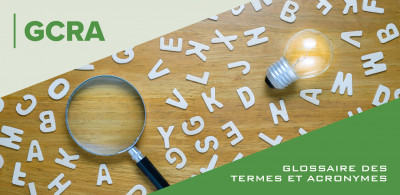ACEUM |
CUSMA |
Canada – United States – Mexico Agreement:CUSMA is the free trade agreement between CA, the USA and MX which replaced the previous North American Free Trade Agreement (NAFTA) on July 1, 2020. |
API |
API |
Application Programming Interface:A software intermediary that allows two computing applications to communicate with each other. |
AQ |
DN |
Daily Notice:An electronic statement issued daily that displays accounting transactions that were recorded on an importer (or broker) account by the CBSA the previous business day. The DN contains information about payments made, interest owing, credits and disbursements issued. DN is issued at the BN9 level. |
ARC |
CRA |
Canada Revenue Agency:The CRA administers tax laws for the Government of Canada and for most provinces and territories and administers various social and economic benefit and incentive programs delivered through the tax system. The CRA is responsible for managing federally issued Business Numbers (BN) that it issues to businesses. Various commercial activities require a BN9, which is a unique, 9-digit number. The BN9 is the standard identifier for businesses which is unique to a business or legal entity. The CRA also manages what are called program accounts, which are 2-letters and 4-digits attached to a BN9, which form the BN15 which is used for specific business activities that must be reported to the CRA (or other relevant Agencies). The most common CRA program accounts that a business may need are:
|
ASFC |
CBSA |
Canada Border Services Agency:The CBSA is the Canadian government agency responsible for providing integrated border services that support national security and public safety priorities and facilitate the free flow of persons and goods, including animals and plants, that meet all requirements under Canadian legislation. The CBSA’s mission is to ensure the security and prosperity of Canada by managing the access of people and goods to and from Canada. The CBSA Assessment and Revenue Management (CARM) is one of the nine distinct branches of the Agency. |
B2 |
B2 |
B2 Adjustment Request:Presently, to request a correction or an adjustment to a B3, an importer or their customs broker must prepare and submit a separate Form B2 - Adjustment Request to the CBSA. (Note: Under CARM R2, corrections and adjustments will no longer be done by submitting a separate Form B2 Adjustment Request. In the future, corrections and adjustments will be done by electronically submitting a new version of the CAD.) |
B3 |
B3 |
B3 Coding Form:The B3 Form (also referred to as the B3-3 for the electronic fillable version of the form) is a customs document presently used to account for imported goods. Form B3B is used together with Form B3 when there is more than one cargo control document to be acquitted by one B3 form. (Note: Under CARM R2, the B3 will be replaced by the CAD.) |
CléGC |
GCKey |
GCKey:The GCKey is a unique electronic credential that allows a person to communicate securely with online enabled Government programs and services, such as the CARM Client Portal (CCP). The Government of Canada, as the service provider, issues the GCKey login credential to individuals for use with CBSA portals (e.g., eManifest portal, PIP portal, CERS portal, or CARM portal) that use the security measures provided by a GCKey for login and access to their portals. |
D120 |
D120 |
D120 Customs Bond Form:The D120 Customs Bond is a financial security instrument accepted by the CBSA to grant Release Prior to Payment (RPP) privileges to an importer or a customs broker. The Customs Bond is a legal contract between a principal (importer or a broker), a surety company, and the CBSA. The bond serves to guarantee that the principal will always pay any applicable duties, GST, SIMA duties (ADD and CVD), surtaxes, excise, and redeterminations that it owes to the CBSA. If the principal fails to pay, the CBSA will collect from the surety company that issued the customs bond and the surety company can then use legal means to collect from the principal. (Note: Under CARM R2, RPP privileges are based on the principal being the importer. After R2, importers can no longer rely on the customs broker’s bond for RPP privileges.) |
DDMC |
CAD |
Commercial Accounting Declaration:The CAD is a digital document that will replace the existing B3 and B2 forms. The CAD will provide a single document to submit accounting information to the CBSA. The CAD will use versioning to allow for changes while maintaining a history of the document and will eliminate the requirement to account for corrections and adjustments on separate document types, thus creating a single accounting declaration of record for each importation including any subsequent changes to the declaration. |
DPA |
PAD |
Pre-Authorized Debit:Pre-Authorized Debits (PADs) are a convenient way to pay the CBSA automatically. Instead of sending a payment, the funds are automatically withdrawn from your bank account with your consent. A pre-authorized debit (PAD) agreement allows importers (and eventually other TCPs) to set up monthly pre-authorized deductions from their bank account (in accordance with their monthly SOA). PAD withdrawals are for the full amount owing on your monthly SOA. The full amount owing must be available in the bank account at the time of withdrawal; otherwise, the PAD will not be completed. Other conditions and guidelines may apply. |
Droits antidumping |
ADD |
Antidumping Duty:Dumping occurs when goods are sold to importers in Canada at prices that are lower than the selling price of comparable goods in the country of export or when goods are sold to Canada at unprofitable prices. Dumping is uncovered pursuant to an investigation prompted by a complaint from a Canadian manufacturer or group of manufacturers who are injured by the dumping. The amount of dumping on imported goods is then offset by the application of an "anti-dumping" duty. |
Droits compensateurs |
CVD |
Countervailing Duty:Subsidizing occurs when goods imported into Canada benefit from foreign government financial assistance. The amount of subsidizing on imported goods may be offset by the application of a "countervailing" duty. |
EDI |
EDI |
Electronic Data Interchange:Is the computer-to-computer exchange of business documents in a standard electronic format between business partners. For example, EDI-enabled importers and customs brokers can electronically remit their payments to the CBSA or can electronically receive their DNs and SOA from the CBSA. EDI can also refer to customs broker’s entry production systems to communicate release and accounting information electronically to the CBSA. |
EFV |
LVS |
Low Value Shipment:LVS describes an import shipment containing commercial goods, having a total customs value below Can$3,300, other than a CLVS. Presently, like CLVS, LVS benefits from a longer extended timeframe to account for released shipments. LVS also benefits from simplified proof of origin requirements for goods eligible for free-trade preferences. (Note: Under CARM R2, entry accounting timeframes will be harmonized with HVS. At R2, LVS must be accounted and CAD submitted within 5 business days of release – same as for HVS. Only shipments eligible for the CLVS program will continue to have extended timeframes to account for entries). |
EFV - Messagerie |
CLVS |
Courier Low Value Shipment:The CLVS Program is an express/expedited program designed for the clearance of express shipments. CLVS also benefits from longer extended timeframes to account for the entry once it is released. An import shipment can be customs cleared through the CLVS Program if the following 3 conditions are satisfied:
|
EVE |
HVS |
High Value Shipment: HVS describes an import shipment containing commercial goods, having a total customs value equal to or higher than Can$3,300. HVS entries must be accounted with the CBSA with calculation of duties and taxes owed within 5 business days of customs release. (Note: HVS accounting timeframes are not expected to change under CARM R2. It is expected that LVS will lose their extended accounting timeframes and accounting will be harmonized with HVS at 5 business days.) |
GCE |
BAM |
Business Account Manager: BAMs have unrestricted administrative access as well as full CCP functionality for a business account and all its associated program accounts. Every business account will require at least one BAM. A minimum of two BAMs is recommended. The BAM role is automatically given to the first individual who links their user profile to their business account by completing the CCP business registration process. The purpose of this role is to assume the primary management and oversight of the business account and delegate access to all other CCP users, including PAMs. |
GCP |
PAM |
Program Account Manager: The PAM role gives full access to all CCP functionality for a specific program account (BN15) only. This role is useful if there is more than one program (RM) account, and the BAM wishes to give access to certain program accounts only. The purpose of this role is to assume the management of a specific program (RM) account alongside the BAM. Whereas the BAM has unrestricted access within the CCP, a PAM cannot access business profile information or banking information, and a PAM can only delegate access to other users for the specific program (RM) account they are delegated access to. |
GCRA |
CARM |
CBSA Assessment and Revenue Management:The CARM will transform how the CBSA collects, manages, and reports on import revenue and trade information. It is a multi-year and multi-phase project. The CBSA’s stated objectives are that CARM will simplify importation, offer a modern interface for importers and their customs brokers to enter information, enable importers to access and amend their trade data on-demand, reduce costs, and elevate the level of compliance with regulations. Through CARM, the CBSA will modernize and streamline its systems and processes for commercially imported goods, strengthen electronic payment options, eliminate various paper processes, offer self-serve options to TCPs and much more. CARM is being launched in two phases (called Releases). CARM Release 1 (R1) began in May 2021. CARM Release 2 (R2) is expected to go into effect no earlier than May 2024. |
GCRA V1 |
CRAM R1 |
CARM Release 1:Implemented in May 2021. The main feature of R1 was the deployment of the online CARM Client Portal (CCP). Enables importers (resident and NRI) and their customs brokers to register for a CCP account for enhanced access to financial transactions to assist TCPs in managing their business. Provides direct visibility into commercial import activity and daily accruals of duties and taxes. Receives key documentation such as DN and SOA electronically. Importers can delegate access internally to the CCP for colleagues needing access as well as delegate authority externally to their designated customs broker. It also gives the ability to set up a Pre-authorized Debit (PAD) to remit payment via the CCP in addition to setting up other electronic payments with financial institutions. |
GCRA V2 |
CARM R2 |
CARM Release 2:Scheduled no earlier than May 2024. R2, when implemented, will offer more robust functionality, but also additional obligations on TCPs. R2 will introduce the new Commercial Accounting Declaration (CAD) that will replace the B3 form. Electronic versioning of the CAD will also replace the legacy paper B2 adjustment process. New correction and billing periods will be introduced. The liability and financial risk for duty and tax payments will be the responsibility of the importer and importers will no longer be able to rely on the financial security of customs broker to continue to benefit from RPP privileges. Each importer will need to post financial security in form of a cash deposit or a Customs Bond on or before the R2 go-live date. At R2 each importer must also have delegated authority to their acting customs broker(s) to allow the broker to account for entries and submit CADs to the CBSA on the importer’s behalf. |
GLCC |
ARL |
Accounts Receivable Ledger:ARL was the first phase of the CARM project to modernize commercial payments with the CBSA. The accounting and payment system now used by the CBSA is called CARM (formerly known as the ARL). |
Importateur non-résident |
NRI |
Non-Resident Importer: An NRI is a foreign business that does not have a permanent establishment in Canada and who causes commercial goods to be imported into Canada and acts as a non-resident importer of record in Canada. An NRI is required to register with the CRA for a BN15 importer program (RM) account if they are acting as the legal importer in Canada. Once CARM R2 goes into effect, the NRI must also have registered for a CCP account, posted financial security with the CBSA, and delegated authority via the CCP to their designated customs broker. There are no exemptions or opt-outs from CARM requirement obligations for NRIs. |
K84 |
K84 |
K84 Importer/Broker Account Statements (K84s): Under ARL, K84 statements were replaced in 2016 with electronic Daily Notices (DN) and monthly Statement of Accounts (SOA), providing importers and customs brokers with more comprehensive statements. However, many in the customs industry still use the term K84 to refer to the monthly SOA, or the K84 date (entry accounting date). Others also reference the K84 billing period (aka ARL period) to designate the current billing period where all import transactions accounted for between the 25th day of the past month up to the 24th day of current month, requires that duties and taxes owed to the CBSA be paid no later than the last business day of the current month. (Note: Under CARM R2 a new correction and billing period will be implemented.) |
LMSI |
SIMA |
Special Import Measures Act: An Act respecting the imposition of anti-dumping and countervailing duties. |
MAP |
RPP |
Release Prior to Payment: RPP is a privilege that entitles importers who have posted financial security with the CBSA, or importers without account security who use a customs broker (who has posted financial security with the CBSA) to:
|
NE9 |
BN9 |
Business Number: A 9-digit numerical business registration number issued by the Canada Revenue Agency (CRA) used to uniquely identify legal entity information of businesses when dealing with the federal, provincial, and municipal governments (e.g., 123456789). The BN9 is typically linked to a business’s Income Tax, Payroll Deduction, GST/HST, and Importer/Exporter program accounts with the CRA. |
NE15 |
BN15 |
Business Number – With Importer/Exporter Account Identifier: A 15-digit number assigned by the CRA, made up of the business’s 9-digit business number (BN9), appended by a 6-digit alpha-numerical number used to uniquely identify the business’s importer/exporter account (e.g., 123456789 RM0001). |
Numéro de compte-garantie |
ASEC |
Account Security Number: The ASEC is a 5-digit number assigned by the CBSA to an importer or a licensed customs broker who has posted financial security (bond or cash) with the CBSA. |
Partenaire de connexion |
Sign-In Partner |
Sign-In Partner: As an alternative to the GCKey, CCP users may choose to use a Sign-In Partner to setup their login credentials for the CCP. Sign-In Partners are private sector companies and organizations (mostly banks and other financial institutions) that have partnered with SecureKey Technologies to enable their customers to use their online credentials (e.g., card numbers or user names and passwords) to access Government of Canada services and portals such as the CCP. |
PCC |
TCP |
Trade Chain Partner: A business that is involved in the importation or cross-border movement of commercial goods imported to Canada such as importers, customs brokers, trade consultants, surety companies, carriers, freight forwarders, 3PL providers and sufferance warehouses. CARM R1 functionalities are available to importers, customs brokers, and on an as-requested basis, to trade consultants who submit ruling requests to the CBSA on behalf of importers. No other TCPs are presently eligible to register for a CCP account during R1. As future releases are deployed by the CBSA, additional TCPs will be added to CARM. |
PCG |
CCP |
CARM Client Portal: An online self-service platform that is the central feature of the CARM project which, once fully implemented, will become the main communications platform between the CBSA, importers, customs brokers, as well as other TCPs. Through the CCP, users will have online access to help manage their customs transactions, including electronic submission of corrections and adjustments, applying for advance rulings electronically, accounting and payment of duties, taxes, and other levies on imported goods using CCP functionalities, as well as access to a duty and tax calculator and HS tariff classification tool, and additional features in the future. |
PDV |
POS |
Point-of-Sale: POS refers to the place where a customer executes the payment for goods or services. In the case of CARM, POS designates CBSA offices and long rooms (i.e., border port, airport, or maritime operation offices) where the CBSA accepts payments by credit card or by debit card. (Note: while CBSA POS offices currently accept payments by cash, bank draft or certified cheque, once CARM R2 goes into effect, POS offices will no longer accept these methods of payment and only credit card or debit card payments up to a maximum of Can$5,000 will be accepted. For higher amounts, online banking or PAD options will need to be used.) |
RC |
SOA |
Statement of Account: An electronic statement for importers or (customs brokers) that is issued monthly by the CBSA. The SOA displays account balances for a billing period and includes a daily summary of accounting transactions made during the billing period that are payable on the SOA due date, as well as other accounting transactions under review with their respective payment due dates. SOA is issued at the BN15 level. |
RSAP |
AMPS |
Administrative Monetary Penalty System: AMPS sets out monetary penalties for contraventions of, or failure to comply with, the Customs Act, Customs Tariff Act, and any regulations under these Acts, including contraventions of the terms and conditions of licensing agreements and undertakings. The AMPS sanctions regime authorizes the CBSA to issue civil monetary penalties to TCPs for the violation of trade and border legislation in the commercial stream. |
TPS |
GST |
Goods & Services Tax: The GST is a flow-through sales tax that is assessed on most goods and services in Canada. Imported commercial goods are subject to the GST, unless the goods are deemed zero-rated supplies, or the transaction scenario exempts the tax. When assessed on imported goods, the GST is calculated at a rate of 5% on the total customs value of the goods plus any applicable duties. While GST may be assessed on imported goods, if the importer who pays the Import-GST is registered with the CRA for GST/HST purposes, such an importer can file periodic GST/HST Returns and claim credits for its GST expenditures. Certain conditions apply. |
TPS directe |
GST direct |
GST Direct: Is a payment option available to a Canadian-resident importers who use a customs broker to customs clear goods on their behalf with the CBSA. Under this option, the importer agrees to pay the GST portion of all import transactions accounted during a billing period, no later than the payment due date, directly to the CBSA (using an importer payment). The broker does not pay the GST to the CBSA on behalf of the importer, rather the importer pays the CBSA directly for the GST assessed on imported goods. While NRIs can participate in the Importer Direct Security option (to pay the CBSA directly for all duties and GST), NRIs are not eligible for the GST Direct option; only residents of Canada are eligible for this latter option. |
Whether you need help registering on the CARM Client Portal, want to better prepare your company for the changes coming under CARM Release 2, are unsure about CARM payment options or are ready to apply for a Customs Bond, W2C experts are waiting to help you.
Contact your W2C representative today to learn how we can make CARM easier for you.



